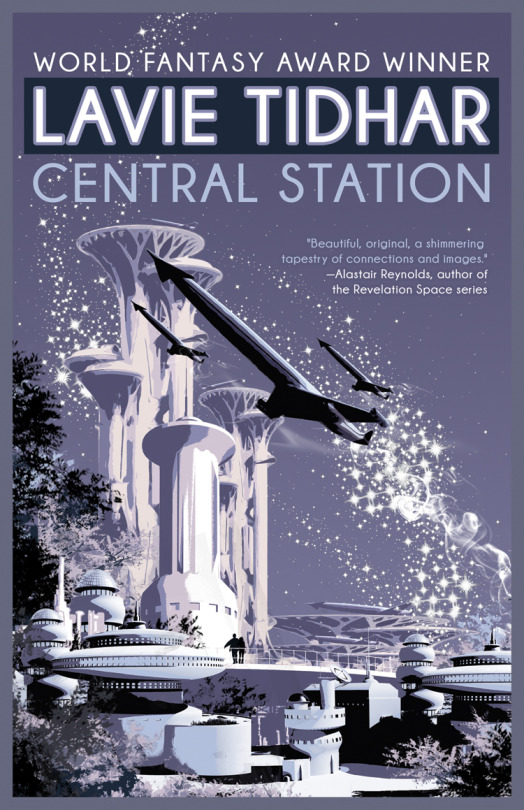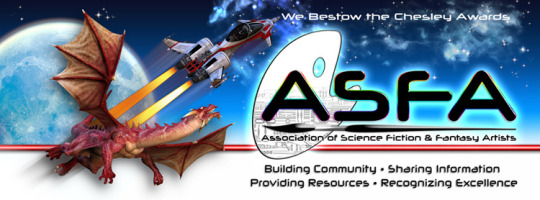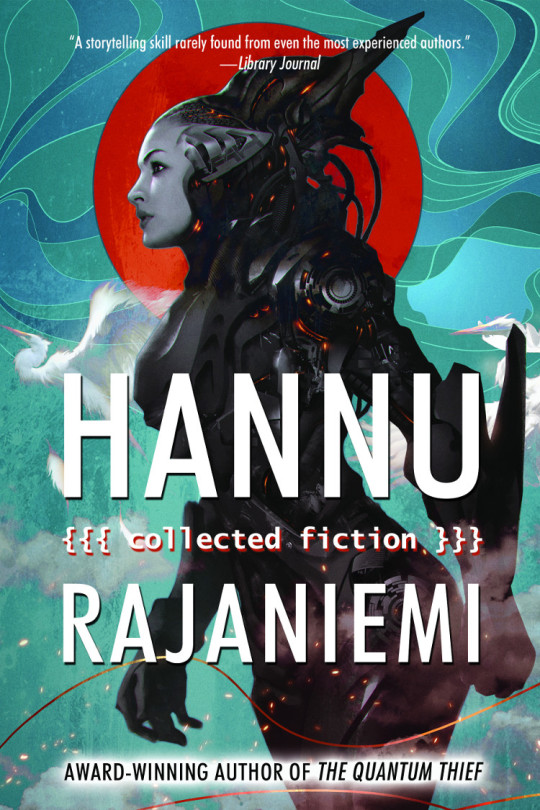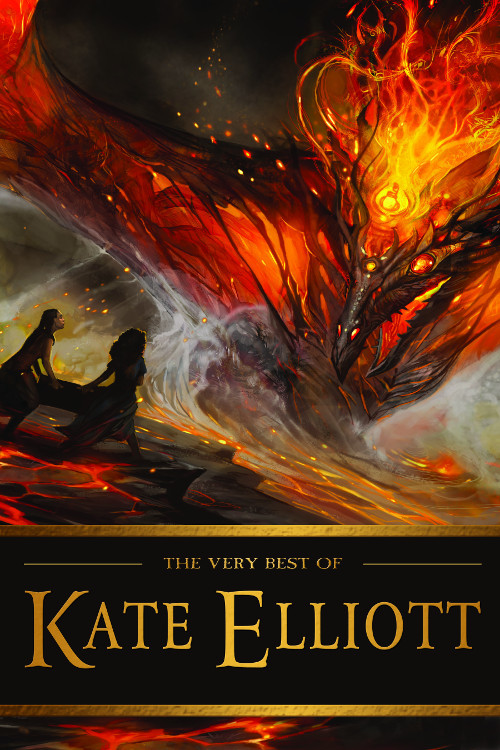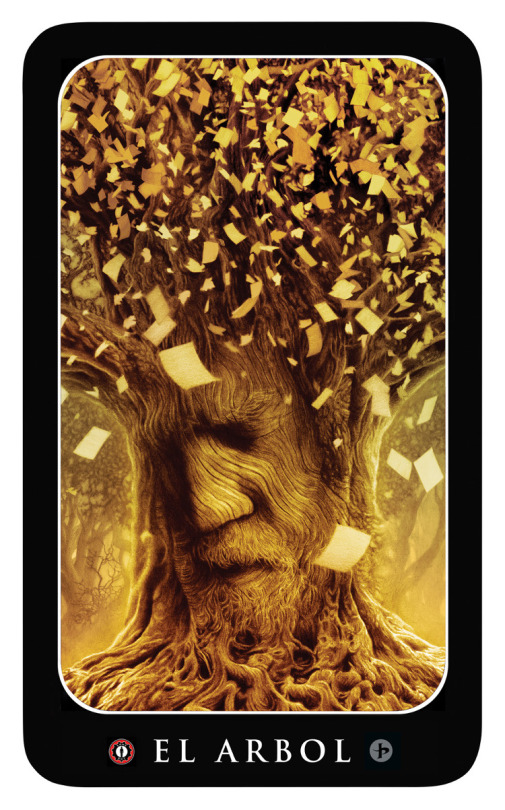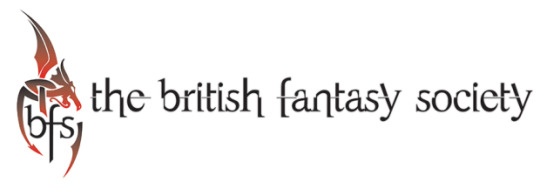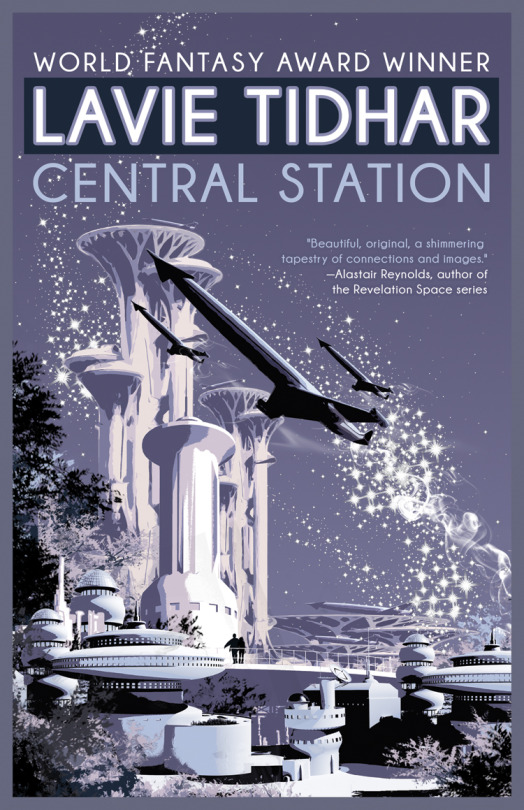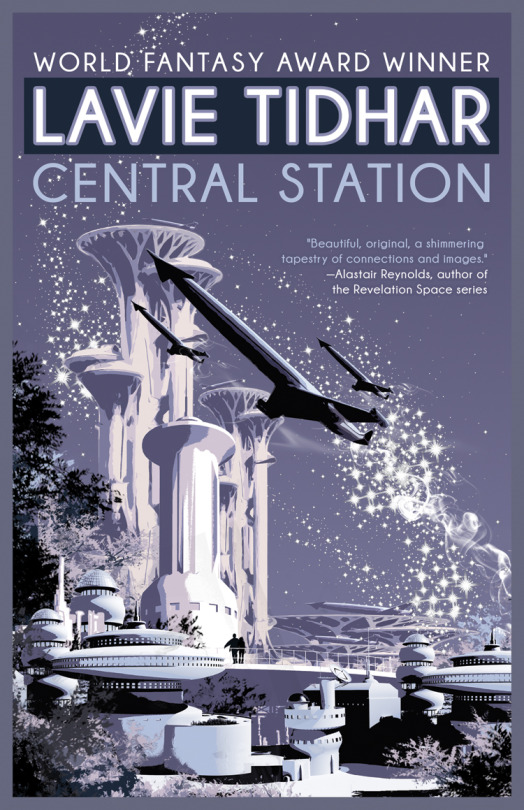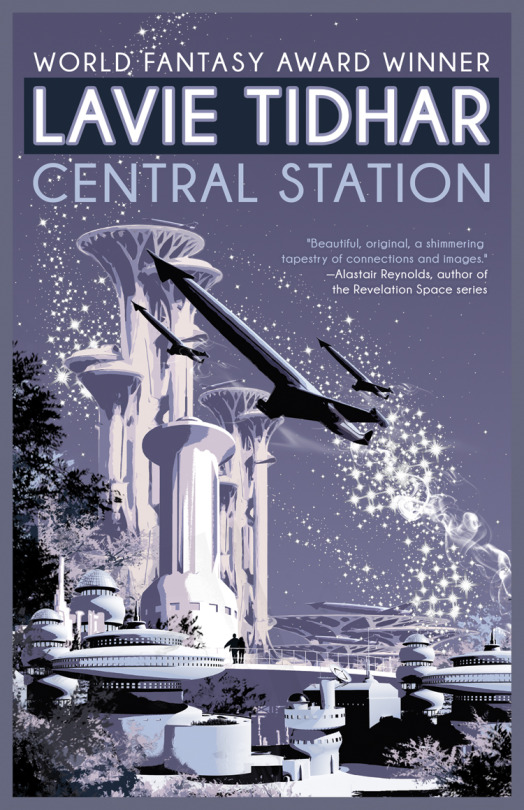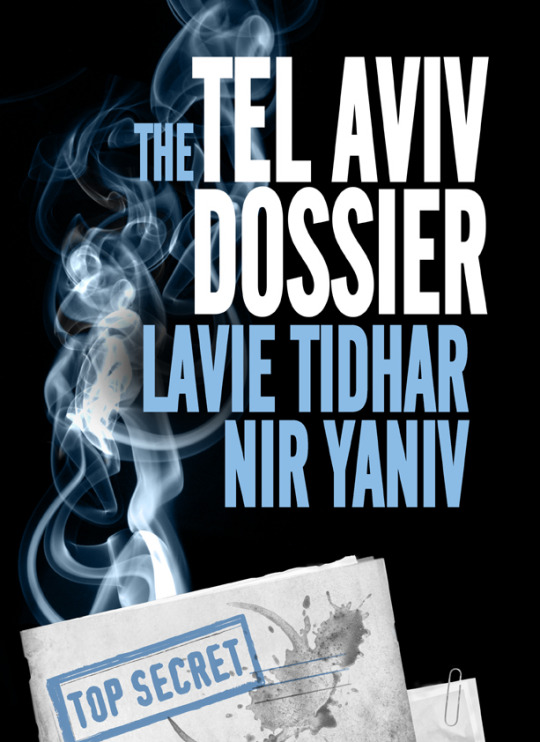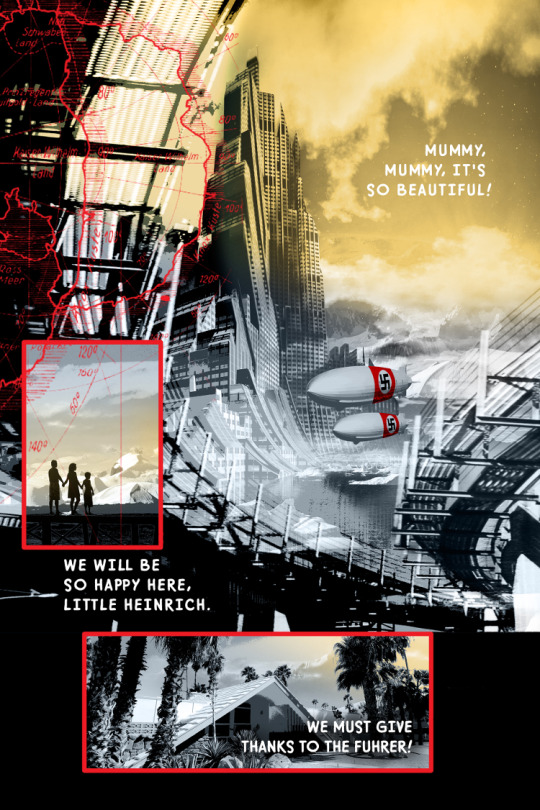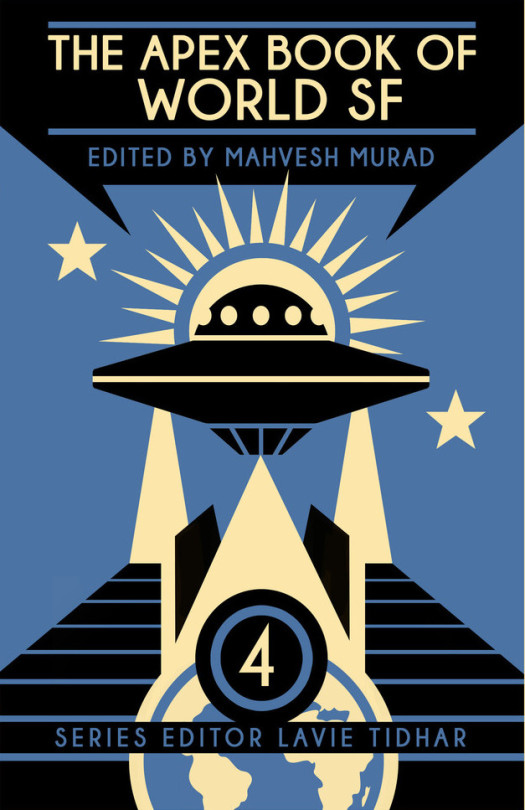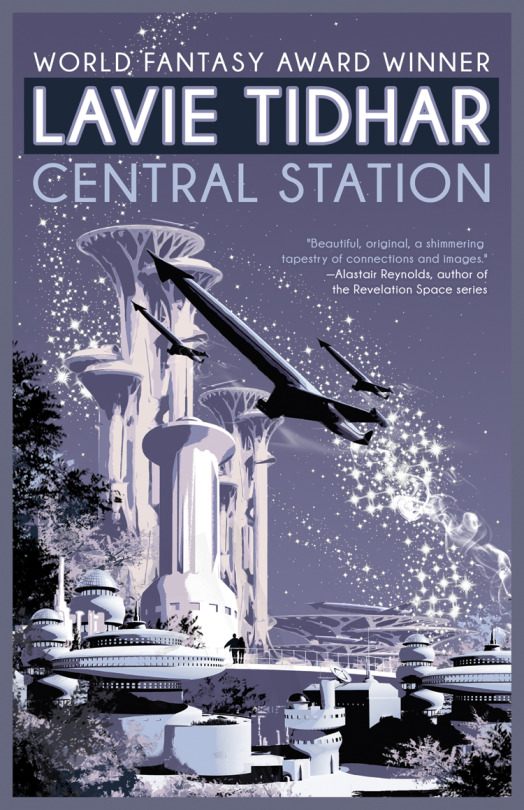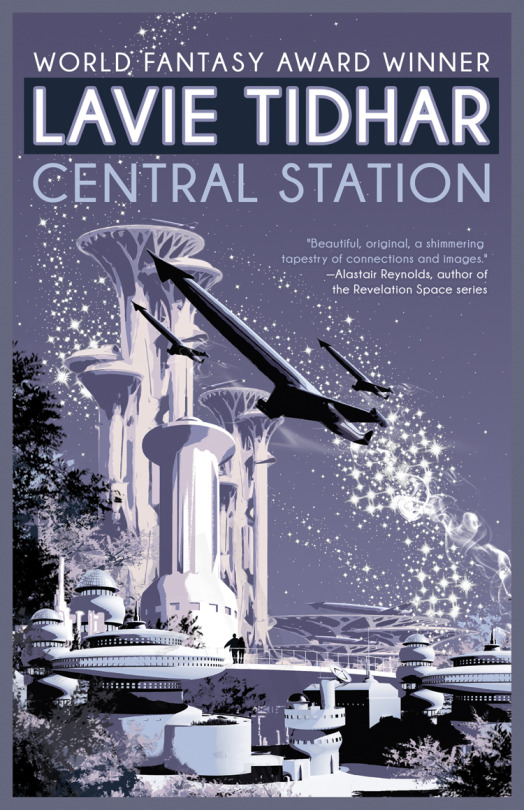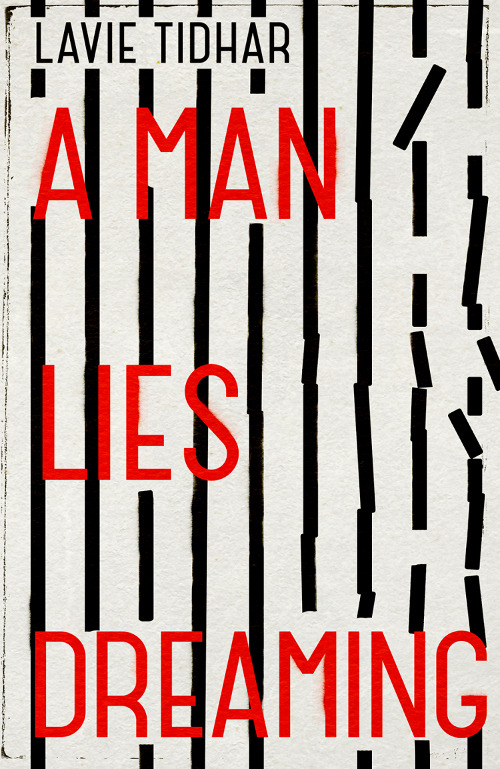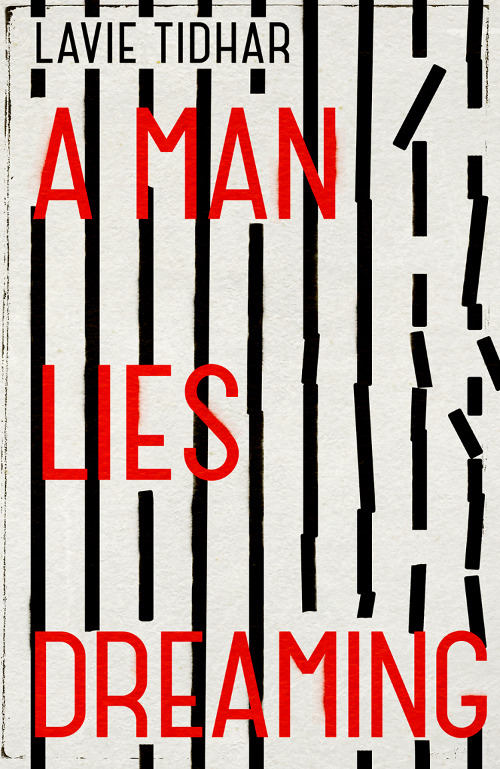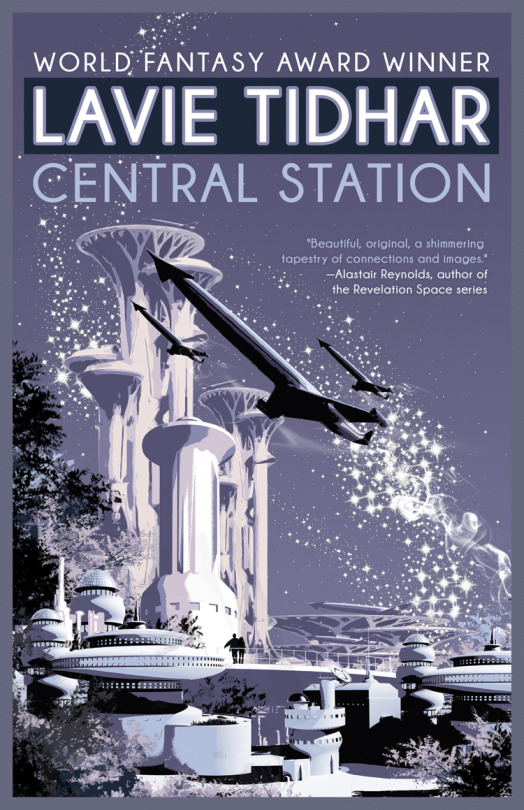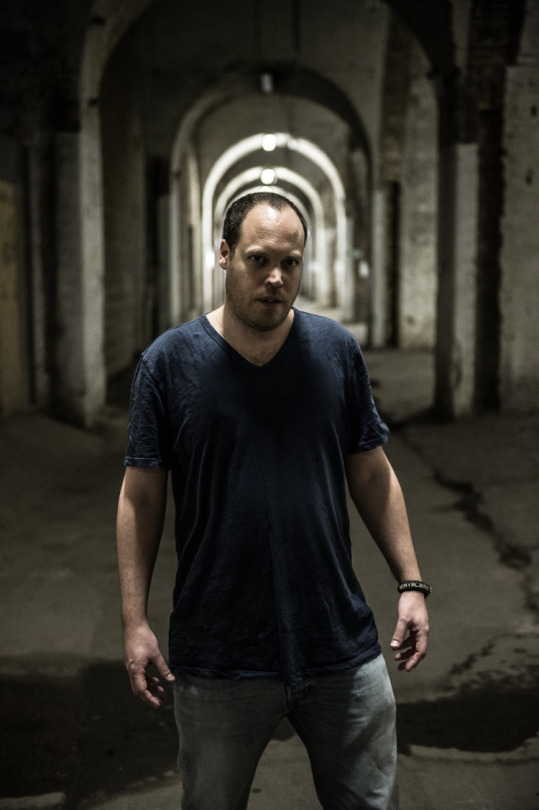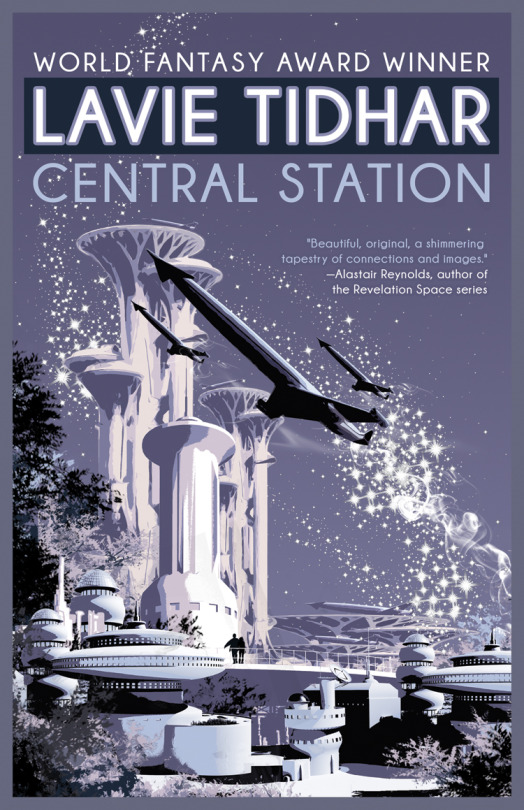CENTRAL STATION delivers a complex and elaborate vision
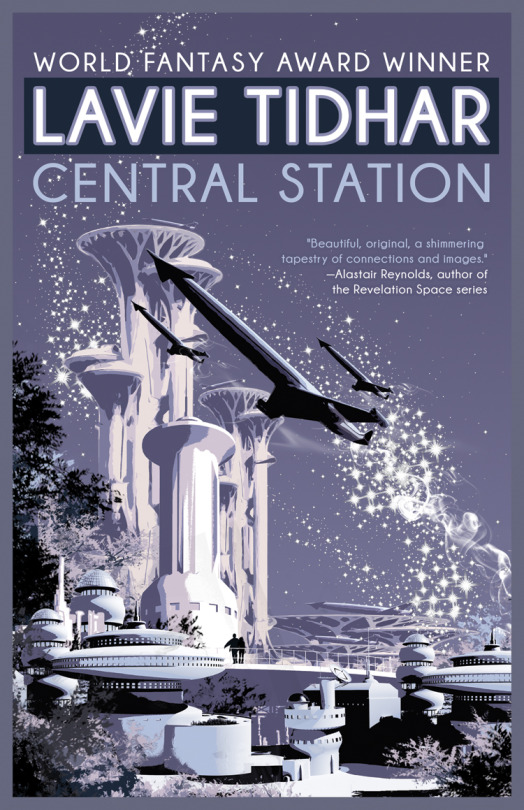
KALIREADS praises Lavie Tidhar’s smart CENTRAL STATION.
All of these characters weave in and out of Lavie Tidhar’s CENTRAL STATION, a complex and elaborate vision of a future directly extrapolated from our present. Close your eyes, take two deep breaths forward into technology’s advancement, and you are there–with the towering, bustling space port of Central Station bursting through the atmosphere above you, its height creating its own miniature weather systems.
Central Station is Tel Aviv, or was Tel Aviv, but is now a bustling space port, a cultural mecca where creatures human and other have met, bounced off of each other, merged, fought, loved, and formed some sort of life together. Those looking for a plot-driven novel will only find hints of one here, but those seeking a world built from scratch will appreciate the strong foundations and smart implications of this future vision.
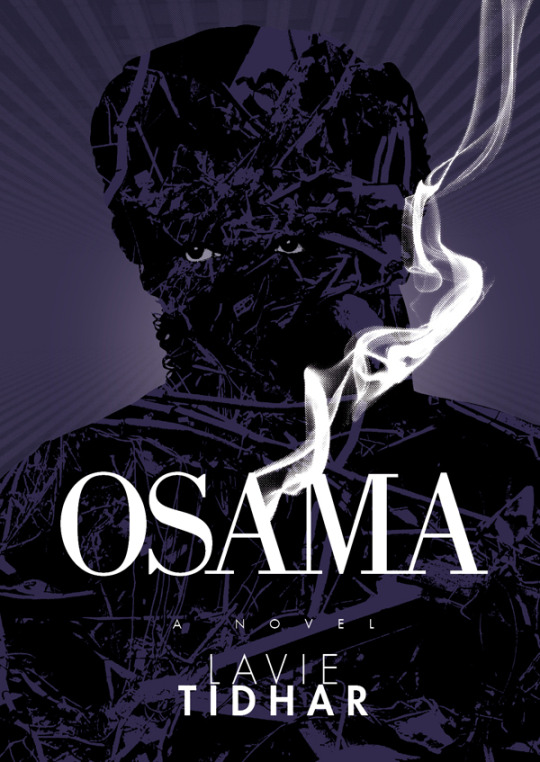
I loved Lavie Tidhar’s OSAMA, and sometimes I wonder if Tidhar is trying to see just how unpopular he can become. He is a talented writer who doesn’t seem to make his projects more digestible for a mainstream audience, which is fine, but I would love to see him make it big with something more easily to consume one day. I also need to find a copy of his MAN LIES DREAMING next, which like OSAMA, sounds almost a bit too meta and brilliant for its own good. But Tidhar is one of the few authors who can take these big, uncomfortable ideas and story tropes and pull something brilliant and beautiful and fresh out of them.
My last post was on Berkeley’s Bay Area Book Festival, and this book received a shoutout from the authors on the Subversive Speculative Science Fiction Panel. If you are looking for something simple, look elsewhere. If you want something to make your mind and heart expand and ache, you’ve found your author.
At THE SEMIOTIC STANDARD, Lavie Tidhar participated in the round table discussion The Collective: Books We Did Not Finish.
The author Tim Parks had a wonderful essay in the NEW YORK REVIEW OF BOOKS a while back that really resonated with me, about not finishing books without necessarily taking away from the value of what you’ve read. A sort of exoneration, if you will: that it’s fine not to finish even very good books, and still value what you have read.
I find that my reading habits have changed a lot in recent years, a function of time and availability. I am no longer able, nor desire to read big books, and so when I can, I am drawn to shorter works, which have always been my favourite, to novellas or short novels. I tend to read a lot of first, second, sometimes even third chapters of books and put them down. Just enough to get an idea of what the author is doing, what people are talking about, but a lot of the time, I won’t pursue the book further. I look for something very specific, a certain literariness or playfulness—I get turned off by plain language or info-dumping or anything that doesn’t feel to me to be new in some way. I look for a voice.
So in a given year, I might read thirty to forty books if I’m lucky, many of them short, but chances are I would have picked up many more books and followed them a short while into the text, and put them down, and not feel worse for doing so.

In the reprinted INTERZONE interview at FILE 770, Jason Sanford discusses sci-fi strange.
CARL SLAUGHTER: Define “sci-fi strange.”
JASON SANFORD: I started using the term a few years ago after David Hartwell and Kathryn Cramer described one of my stories as “new weird SF.” That comment tickled me since I’ve long been a fan of the New Weird movement, with authors like Jeff VanderMeer and China Miéville ranking among my favorite fantasy writers. But the comment also set me to thinking about the science fiction authors who excited me the most. I wondered if there was a trend here, decided there was, and eventually started calling it sci-fi strange.
To me, sci-fi strange stories exhibit well-crafted language, a strong sense of wonder, and reflect the truth of our multicultural world. Sci-fi strange stories cross back and forth across the boundaries of what is scientifically and realistically possible, often flirting with the fantasy genre. But these stories aren’t fantasy. Instead, they’re an updated version of the “literature of ideas” theme within the science fiction genre. I see sci-fi strange as science fiction for a world where the frontiers of scientific possibility are almost philosophical in nature.
CS: What are the genre, story, and author influences for sci-fi strange?
JS: A number of authors I love create what I’d call sci-fi strange, including Paolo Bacigalupi, Aliette de Bodard, N.K. Jemisin, Ted Chiang, Yoon Ha Lee, Ken Liu, Nnedi Okorafor, Rachel Swirsky, Lavie Tidhar and Caroline M. Yoachim, among many others.
I’d say Paolo Bacigalupi is the prototypical sci-fi strange author, as exhibited by many of his short stories along with novels like THE WINDUP GIRL. Aliette de Bodard’s Xuya continuity of short fiction is also very much sci-fi strange (there are many great stories in this series, including her novella On a Red Station, Drifting). Most of Ted Chiang’s fiction feels like sci-fi strange, as does Lavie Tidhar’s Central Station stories. I’d also place within sci-fi strange Nnedi Okorafor’s novella “Binti,” which is pure SF, and WHO FEARS DEATH, which actively blurs the lines between fantasy and SF in very exciting ways.
WHO FEARS DEATH actually ties in with an interesting point, which is that many of the authors I’ve named go back and forth between the science fiction and fantasy genres. For example, some of Ken Liu’s best short fiction is pure science fiction, yet his first novel is an epic fantasy. Makes me wonder if authors who defy being pegged down to a single genre with their writings are also people willing to defy the accepted tropes of science fiction.
For more info about CENTRAL STATION, visit the Tachyon page.
Cover by Sarah Anne Langton

